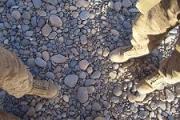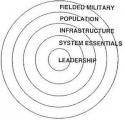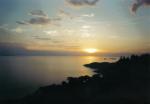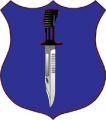one Air force and one old Marine Aviator -- both fighter pilots -- agree that selection can only tell part of it; that combat experience (good or bad) can have impacts that are difficult to foretell; current in which one is serving Squadron leadership can make a difference either way; the aircraft being flown is important (the OV-10, for example was woefully underpowered and thus couldn't get out of trouble as easily as the O2/Cessna 337; and that the type of airplane one first flew operationally has a big impact. The Marine thinks that last two are by far the most significant, he contends there was a major difference in attitude (as opposed to capability, which was pretty much a wash) between Navy F8 and F4 pilots and between Marine F8 or A4 pilots and their F4 counterparts.
He also contended it was hilarious to watch an ex A4 pilot get the stick of a big fat F4 for the first time...

An even older Marine Aviator agreed and said he'd noticed a slight difference in attitudes and aggressiveness between Marine F4U Corsair pilots and AD Skyraider pilots during the Corps brief possession of a single Squadron of the latter in Korea. Both were great aircraft and really good for CAS but they had very different flying characteristics.
Today, there are significant political constraints in the US. Our Congress, to avoid having to respond to complaints about process, is insistent that all military selection processes be 'objective' and 'fair' -- both to the point of overruling operational capability if of not sheer idiocy. Aggressiveness today as a characteristic is more likely to be frowned upon than to find favor (We're in one of our 'nice guy' phases -- those come and go

). It will stay that way unless we get in a big war, then it'll go away totally until peace returns...

Probably one of the Board's airplane driver types can add more (certainly more current than the views of four ORFs, one of whom is dumb grunt

) and far better info.










 ). It will stay that way unless we get in a big war, then it'll go away totally until peace returns...
). It will stay that way unless we get in a big war, then it'll go away totally until peace returns... 





Bookmarks